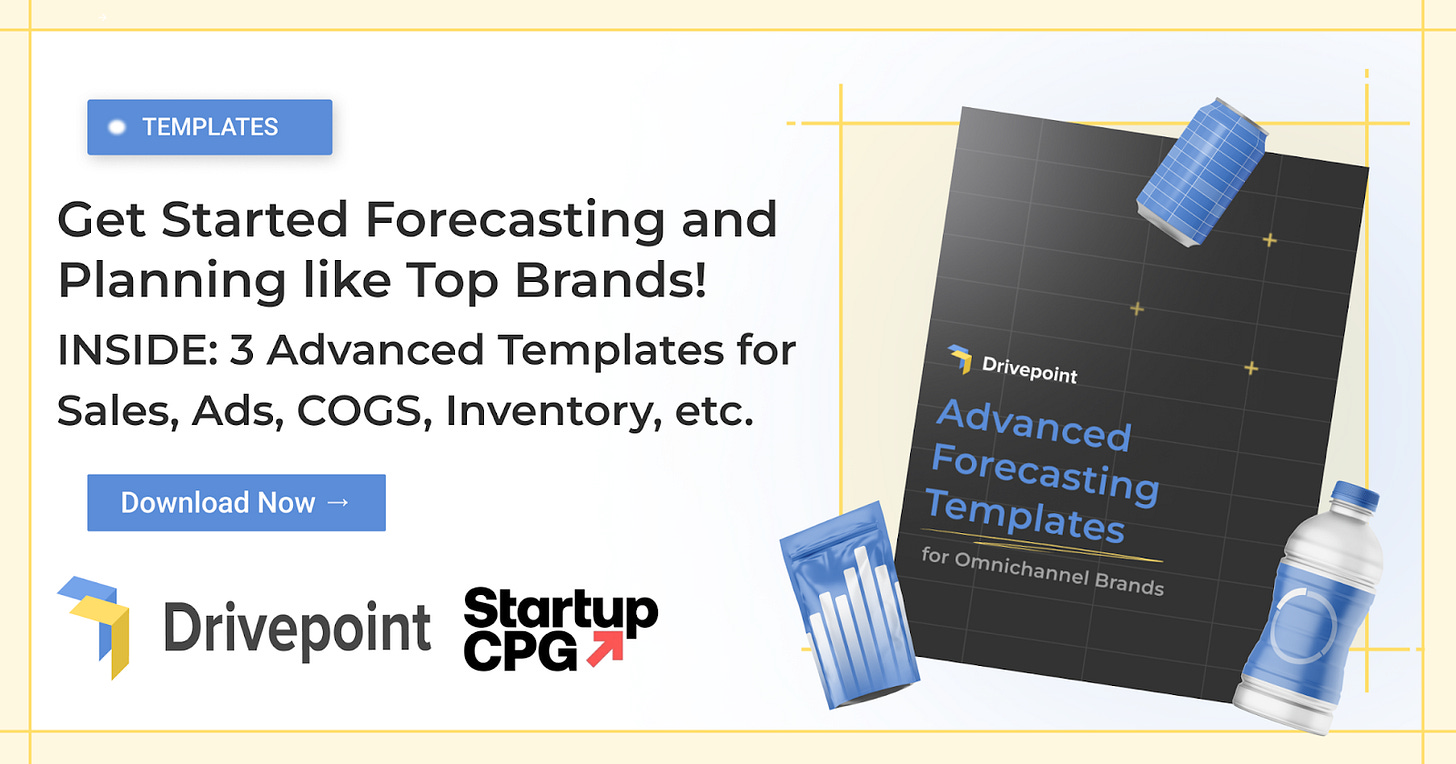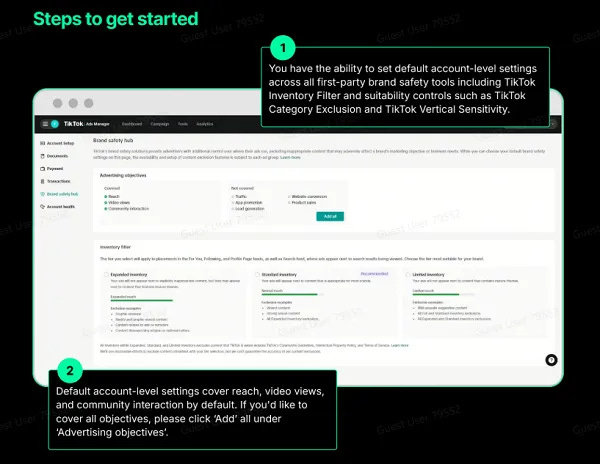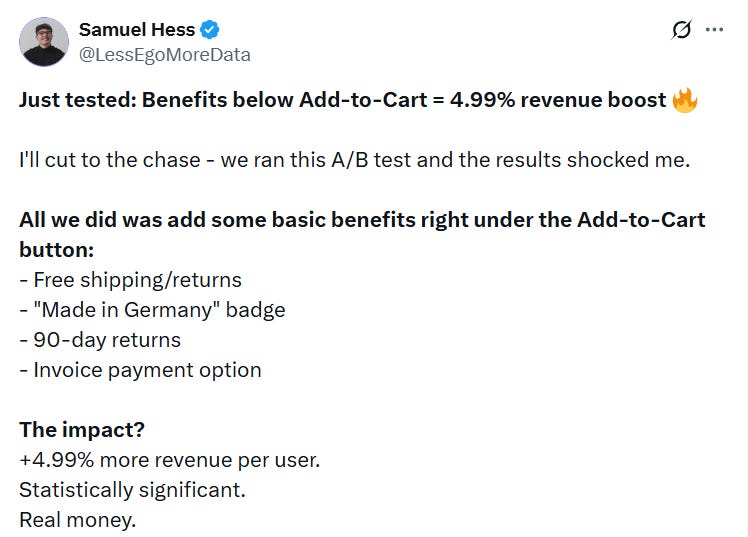The Most Overlooked Time to Test
⚡️Why your “working” funnel might be the biggest risk of all but the best time to test!, TikTok Expands Brand Safety Controls for Advertisers, and more!
Howdy Readers 🥰
In this newsletter, you’ll find:
🧠 The Most Overlooked Time to Test
🧰 TikTok Expands Brand Safety Controls for Advertisers
🚀 Tweet of the Day
If you’re new to Buyology then a hearty welcome to you, You’ve reached the right place alongside 50k+ amazing people. Before you forget, if someone forwarded this newsletter to you, don't forget to subscribe to our newsletter so you never miss out!
Together with Drivepoint
📈 Free: 3 Advanced Forecasting Templates Built by Drivepoint for DTC or Retail Brands—trusted by True Classic, Oats Overnight, and Curology!
Scaling across DTC, retail, or wholesale? Stop guessing—start forecasting with confidence.
Drivepoint, the strategic finance platform behind True Classic, Oats Overnight, and Curology, is giving you free Excel forecasting templates to help omnichannel brands scale smarter.
Track ad spend, prevent stockouts, manage COGS, and forecast revenue—all in one place. These plug-and-play Excel templates give you a pro-level jumpstart.
When you’re ready for automated data syncing, AI insights, real-time scenario modeling, and hyper-accurate forecasting, Drivepoint is your go-to platform.
📊 Download your free forecasting templates now!
🧠 The Most Overlooked Time to Test
Let’s set the scene: Your funnel’s humming. Ads are dialed in, your PDPs convert well enough, and nothing’s broken. Growth feels… predictable.
This is where most marketers relax.
But here’s the paradox: predictability breeds stagnation.
The plateau isn’t failure. It’s worse—it’s performance inertia dressed up as stability.
And if you’re not running bold tests when things are “fine,” you’re leaving your sharpest gains on the table.
The Plateau Problem
Here’s what happens in the real world:
You hit a baseline CVR and freeze. You optimize within guardrails. Your testing becomes cosmetic—“What if we make the button orange?”—because no one wants to break a working funnel.
But great funnels aren’t found—they’re forged through discomfort. The biggest conversion lifts don’t come from tiny tweaks. They come from paradigm shifts:
A rewritten value prop that reframes your offer
A layout that defies the gridlock of “best practices”
A landing experience that prioritizes simplicity over information
You don’t test these when your funnel’s bleeding.
You test them when it’s steady—because that’s when the signal is clean and the stakes allow for risk.
A Framework for Testing in Calm Periods
1. Test Against Your Own Success
Find your best-performing element (headline, layout, offer) and build a variation that contradicts it. If it loses, you gain confidence. If it wins, you’ve just unlocked a new baseline.
2. Isolate for Insight, Not Just Impact
Not every test has to be a moonshot. Run a few just to understand user behavior:
What happens when you remove reviews?
Do people scroll deeper when images are replaced with text?
Does performance dip when you hide the price until the second fold?
3. Prioritize Experiments That Wouldn’t Be Approved in a Crisis
Your team won’t greenlight wild tests when metrics are crashing. Launch them now—while you have internal buy-in and room to recover.
Platforms like Stellar make this easier. Lightweight, no-code testing means you don’t need to schedule a dev sprint just to test a bold hypothesis. You can build, launch, and learn without friction so book your Demo here!
Final Thought
If you only test when things are broken, your growth strategy is reactive.
The best marketers test during stillness—when results are steady—because that’s when you can afford to challenge what’s “working.” And the real winners? They never stop asking: What if this isn’t our ceiling?
🧰 TikTok Expands Brand Safety Controls for Advertisers
TikTok just supercharged its brand safety toolkit, giving advertisers more control than ever before over where and how their ads appear. With new exclusion lists, in-flight moderation tools, and detailed post-campaign insights, TikTok aims to ease brand concerns around ad placement and reputation risks.
The Breakdown:
1. More Granular Pre-Campaign Filters - Advertisers can now fine-tune where ads show up using TikTok’s Inventory Filter, Category Exclusion, and Vertical Sensitivity tools. These allow blocking of content across sensitive categories and industries.
2. New Exclusion Lists for Ad Adjacency - Two major additions—Video Exclusion Lists and Profile Feed Exclusion Lists—let advertisers block specific videos or creators by ID, preventing ads from appearing next to misaligned or risky content. Exclusions are supported by verification partners like IAS, DV, and Zefr.
3. Mid-Campaign Comment Controls - TikTok Comment Management enables advertisers to moderate ad comments in real time. Brands can hide, disable, or filter replies during live campaigns.
4. Post-Campaign Transparency Metrics - After campaigns, TikTok offers third-party insights into brand safety, suitability, category risk, and misinformation exposure, helping brands audit outcomes and refine targeting for future campaigns.
With increasing scrutiny on ad placement and online reputation, TikTok’s updates offer brands both preemptive and reactive tools to protect their image. From blocking risky creators to moderating conversations, it’s a robust system that boosts confidence in ad investment.
🚀 Tweet of the Day
Advertise with Us
Wanna put out your message in front of over 50,000 best marketers and decision makers?
Checkout our Partner Kit here🤝
At Buyology, we care about our readers and want to provide the best possible experience. That's why we always look for ways to improve our content and connect with our audience. It would be amazing if you could hit us up with feedback about our content or absolutely anything, we are always up for a chat 🥰
Thanks for your support, we'll be back with more such content 🥳






